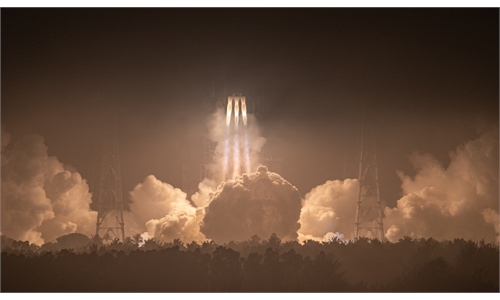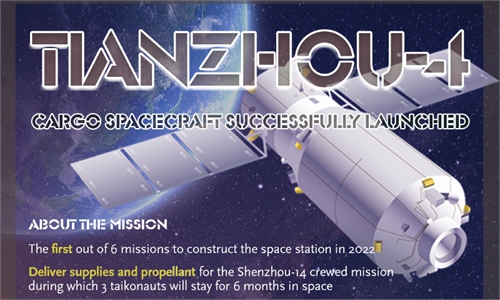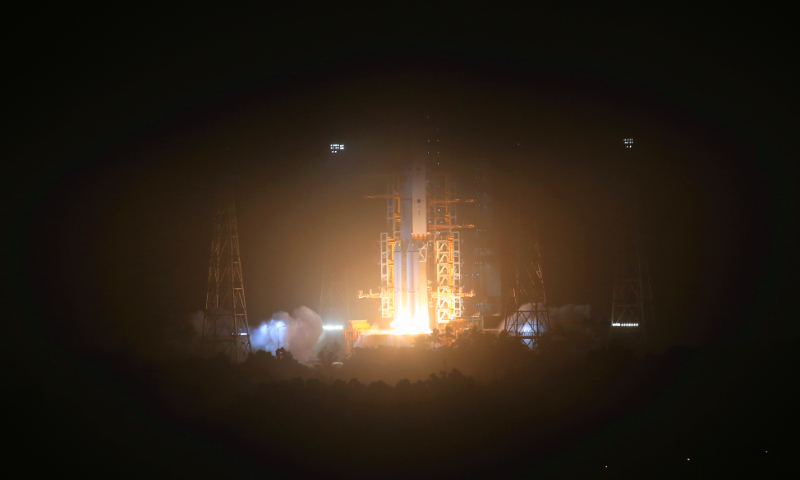
Photo: Tu Haichao
Tasked to ferry supplies for the following Shenzhou-14 manned spaceflight mission and materials for the in-orbit assembly of China Space Station, Tianzhou-4 cargo spacecraft riding atop the Long March-7 Y5 carrier rocket took off from the Wenchang Spacecraft Launch Site in South China's tropical island province of Hainan on Tuesday early morning around 1:56 am.
After a flight of about 10 minutes, Tianzhou-4 separated with the rocket and entered preset orbit. At 2:23 am, the solar panels onboard the spacecraft smoothly unfolded, with all functions in normal operating condition, marking the success of the third launch of a spaceship to the space station core cabin, according to the China Manned Space Agency (CMSA.)
Mission insiders revealed to the Global Times on the sideline of the launch mission that it would take merely about six and a half hours after launch for the spacecraft to conduct fast rendezvous and docking with the Tianhe core module's rear port, which is similar to the Tianzhou-3 mission in September 2021.
According to the spacecraft developer, the China Academy of Spacecraft Technology (CAST), Tianzhou-4 carries more than 200 parcels of cargo weighing some 6.2 tons in the delivery run, supplying the astronauts, space station systems and space application domains. Propellants of 750 kilograms are also onboard.
Those supplies would ensure the smooth implementation of following missions such as another six-month stay of three taikonauts - the Shenzhou-14 mission, the in-orbit construction and assembly of the China Space Station as well as scientific projects of a range of disciplines such as material science and space medicine, according to the CAST.
It is also worth noting that the Tianzhou-4 craft also possesses capabilities of controlling the space station's flight form and flying orbit, providing remote monitoring and data transmission services to the space station as well as supporting in-orbit science experiments.
Being a fully-sealed spacecraft, Tianzhou-4 is by far the world's largest in-service cargo spaceship with the most comprehensive in-orbit support capability, the CAST noted.
The CAST also made improvements to the craft based on suggestions from taikonauts who have visited the space station. For example, to facilitate taikonauts searching for goods in-orbit, Tianzhou-4 has added labeling design and applied colors to packages' handles.
Dang Rong, deputy chief designer of the craft, told the Global Times that Tianzhou-4 also carried payload for special experiments and would release a satellite as part of the process.
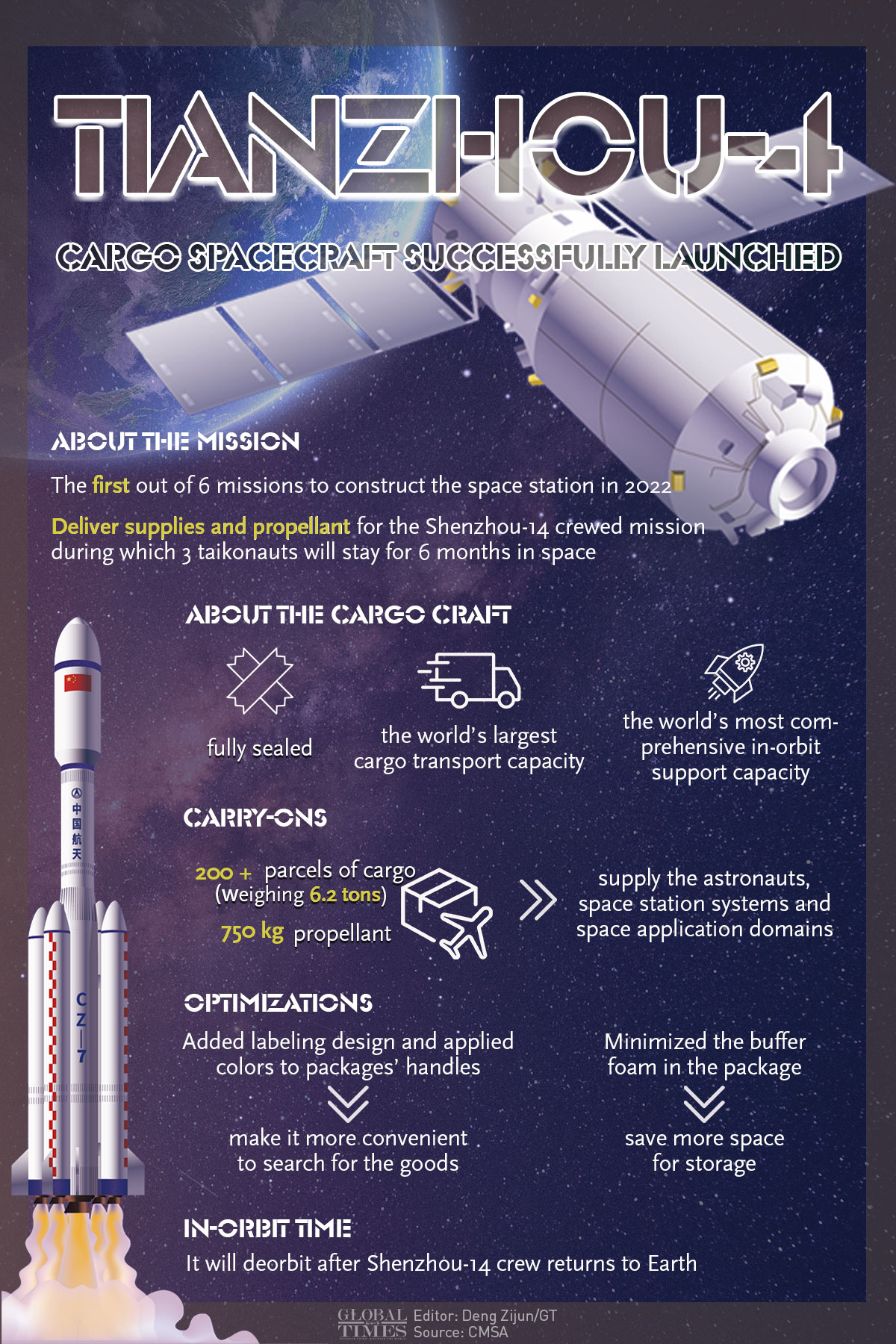
Tianzhou-4 cargo spacecraft successfully launched Infographic: Deng Zijun/GT
It would be the fourth time that the 53.1-meter-long, 3.35-meter-diameter Long March-7 rocket carried its Tianzhou passengers to space. Having established perfect coordination between the two space buddies, the rocket's flight reliability assessment value has reached 0.9838, an internationally advanced level, indicating a stabilized overall technical status of the rocket.
For this mission, the first run to China's space station core module this year, the rocket has made 17 technical upgrades, optimizing pre-launch processes, shortening preparation time, and reducing the requirements for personnel, equipment, weather and other conditions.
Through the slew of changes, the rocket's test and launch cycle has been reduced by 4 days, from 31 days to 27 days. This is also the first time that a Long March-7 rocket has been tested and launched within one month.
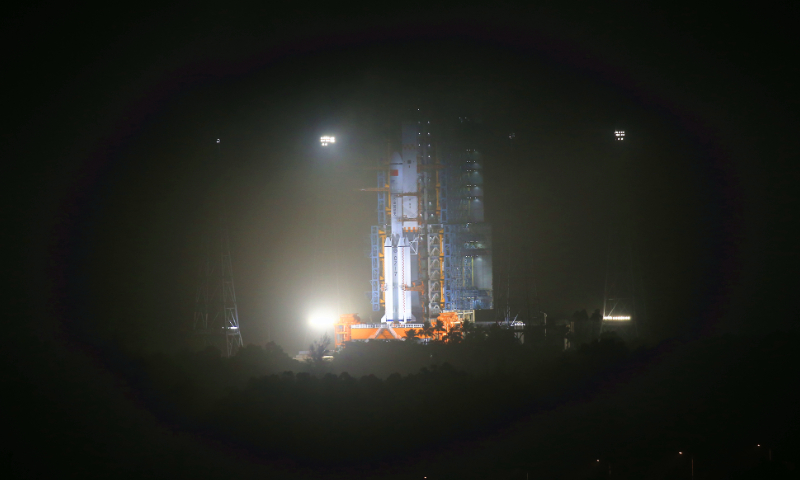
Photo: Tu Haichao
Marking a new stage
The Tuesday mission marked the first of the six space station-building-tasked launch missions in 2022 by the end of which China Space Station would complete construction and become operational.
With 2022 marking the 30th anniversary of the establishment of the country's manned space engineering project, the completion of Tiangong is a key target of the three-step strategy for the project, and an important symbol of China becoming a strong space power in the world, Hao Chun, the director of the CMSA revealed at a press conference following the triumph return of Shenzhou-13 crew by mid-April.
The six flights are the Tianzhou-4 cargo spacecraft, another supply run for the next shift, launched today; the Shenzhou-14 manned mission in June; the Wentian experimental module in July; the Mengtian experimental module in October; another cargo mission, the Tianzhou-5, and a manned mission, the Shenzhou-15.
The Shenzhou-14 and -15 manned missions, which will each carry a crew of three members, will meet and stay together in the station for about five to 10 days when the two crews rotate, said Huang Weifen, head of taikonauts training system at the same press conference. It means that China's space station will have, for the first time, six taikonauts staying in orbit at the same time, testing the station's maximum capacity for human stays in the short term.
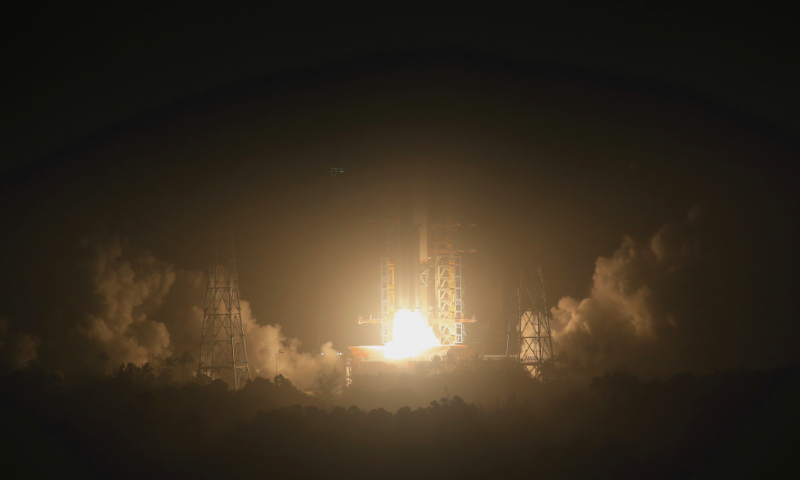
Photo: Tu Haichao
Next year, China plans to launch its first large-scale telescope called Xuntian, or "survey the heavens." It will have a 2-meter diameter lens, which according to space.com, a professional news website covering space activities around the world, makes it "comparable to the Hubble Space Telescope," only boasting a field of view 300 times greater than that of the 31-year-old Hubble while retaining a similar resolution.
On international collaboration over the China Space Station, Wang Wenbin, said during a routine press conference on April 18 that since the inception and implementation of the China manned space engineering program, China has followed the principles of peaceful use, equality, mutual benefit and common development. It signed cooperation agreements and carried out cooperation projects in various forms with France, Germany, Italy, Russia, Pakistan, and many space agencies or organizations including the UN Office for Outer Space Affairs (UNOOSA) and the European Space Agency, with fruitful outcomes.
"The China Space Station is the first of its kind, being open to all UN member states. So far nine projects from 17 countries and 23 entities have been included in the first batch of selected projects for the China Space Station science experiment. At present, we are working on the first batch of international cooperation projects for China Space Station in collaboration with UNOOSA, which hopefully will see the beginning of experiment and research in space at the end of this year," the spokesperson revealed.
Foreign astronauts are welcome to visit the China Space Station and join Chinese astronauts in making more positive contributions to exploring the universe and building a community with a shared future for mankind, Wang announced.

